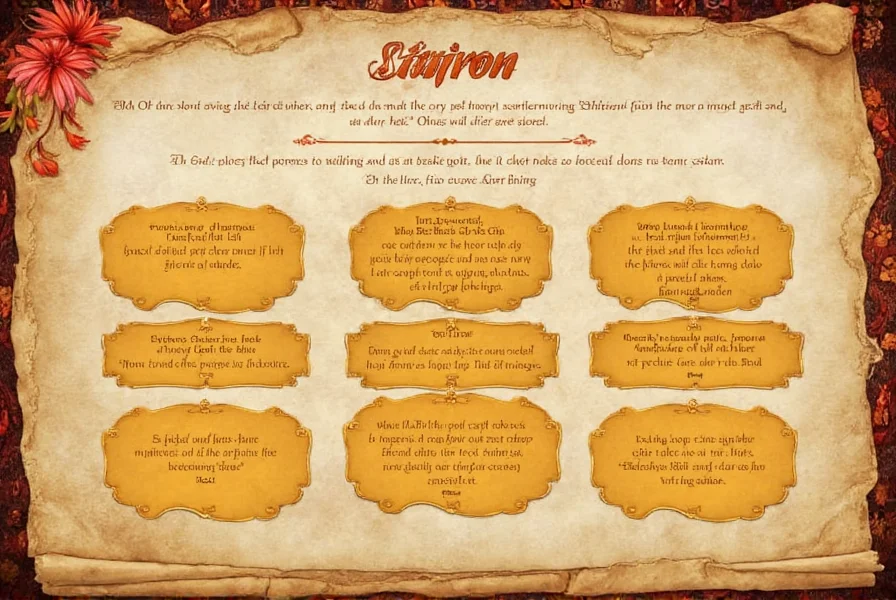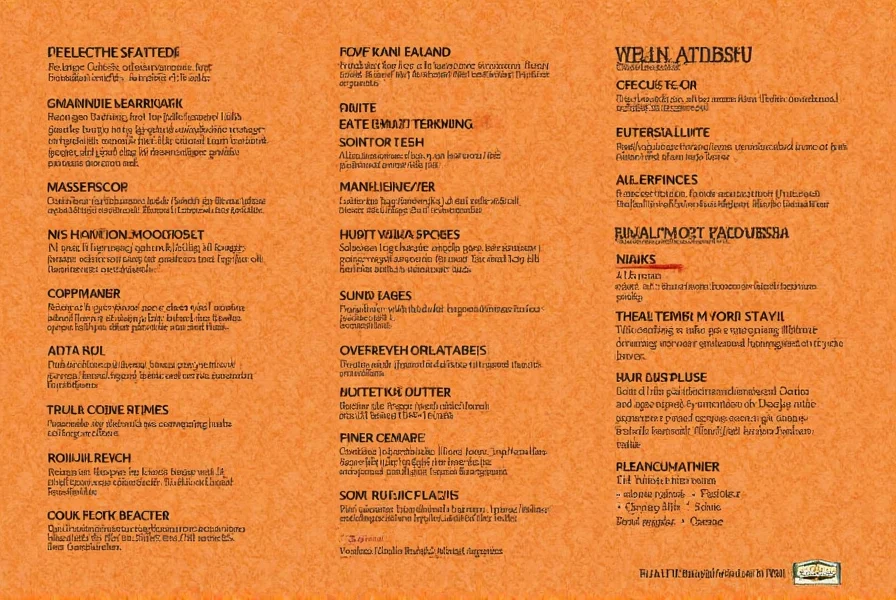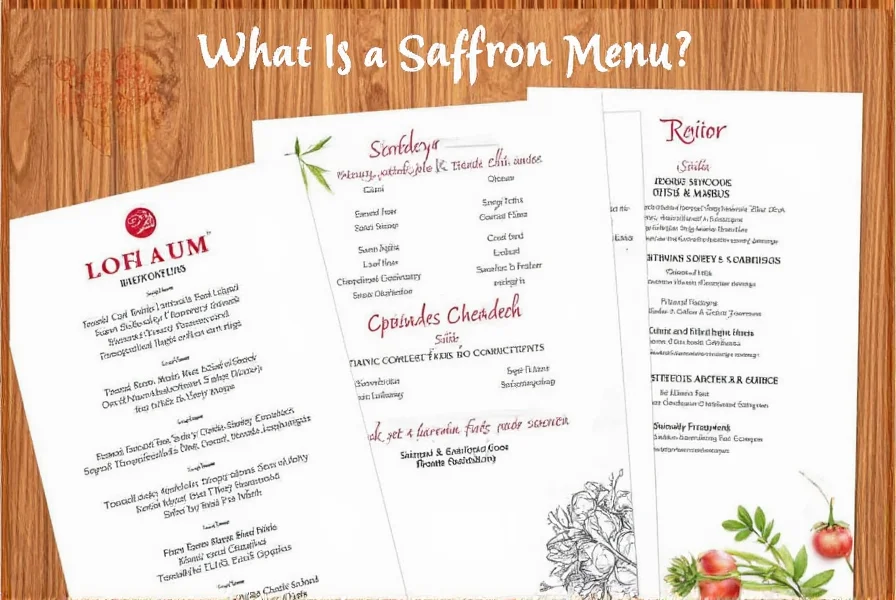Saffron's delicate floral notes and vibrant hue make it a prized ingredient in culinary traditions worldwide. When designing a saffron-focused menu, understanding how to properly incorporate this precious spice across different courses creates a cohesive dining experience that celebrates its unique properties without overwhelming the palate.
Understanding Saffron in Culinary Contexts
Saffron threads come from the stigma of Crocus sativus flowers, requiring approximately 75,000 flowers to produce just one pound of the spice. This labor-intensive harvesting process explains saffron's status as the world's most expensive spice by weight. Authentic saffron delivers a complex flavor profile with subtle notes of honey, hay, and earthiness that enhances both savory and sweet preparations.
When planning a saffron menu, consider these essential factors:
| Factor | Consideration | Menu Impact |
|---|---|---|
| Intensity | Use sparingly (¼-½ tsp per 4 servings) | Prevents bitterness while maintaining flavor balance |
| Preparation | Steep in warm liquid before use | Maximizes color release and flavor extraction |
| Pairings | Complements seafood, rice, eggs, and dairy | Creates harmonious flavor combinations across courses |
| Seasonality | Works year-round but shines in spring/summer | Allows for seasonal ingredient pairing flexibility |
Cultural Traditions Featuring Saffron Menus
Saffron has deep roots in multiple culinary traditions, each offering distinctive approaches to saffron menu planning:
Mediterranean Saffron Traditions
Spanish paella valenciana represents perhaps the most famous saffron dish, where the spice colors and flavors the rice base that supports chicken, rabbit, and vegetables. Italian risotto alla milanese showcases saffron's ability to transform simple rice into an elegant centerpiece. These traditions demonstrate how saffron can anchor an entire meal around a single showpiece dish.
Middle Eastern Saffron Specialties
In Persian cuisine, saffron appears throughout the menu rather than in isolated dishes. Traditional Persian saffron menus might include:
- Tahdig (crispy saffron rice)
- Fesenjan (saffron walnut pomegranate stew)
- Saffron-infused rice pilafs
- Bastani (saffron rosewater ice cream)
This approach creates a cohesive dining journey where saffron threads connect multiple courses.
South Asian Saffron Applications
Indian and Pakistani culinary traditions use saffron more selectively, often reserving it for special occasion menus. Biryani rice dishes frequently feature saffron layers, while desserts like kulfi and kheer incorporate the spice for both color and flavor. Traditional wedding menus in these regions often include multiple saffron-infused elements as a symbol of prosperity.
Designing a Balanced Saffron Menu
Creating a successful saffron menu requires thoughtful planning to showcase the spice without allowing it to dominate. Consider these professional menu planning strategies:
Course-by-Course Integration
Rather than concentrating saffron in one dish, distribute it thoughtfully across the menu. A well-constructed saffron menu might feature:
- Appetizer: Saffron-infused soup or crostini
- Main Course: Saffron rice or sauce component
- Dessert: Subtle saffron flavor in custard or ice cream
This approach creates a narrative thread that connects the dining experience while preventing palate fatigue.
Budget-Friendly Saffron Menu Planning
Given saffron's expense, professional chefs employ several techniques to maximize impact while minimizing cost:
- Use saffron in liquid-based dishes where color and flavor distribute evenly
- Pair with ingredients that naturally complement saffron's flavor profile
- Focus on quality over quantity—authentic saffron requires minimal amounts
- Consider using saffron-infused oils for finishing rather than direct incorporation

Complete Saffron Menu Examples
Here are three practical saffron menu templates suitable for different occasions:
Spring Brunch Saffron Menu
- Appetizer: Saffron-infused lemon ricotta crostini with honey drizzle
- Main: Saffron crêpes with fresh berries and whipped cream
- Beverage: Saffron orange blossom mimosa
- Dessert: Saffron shortbread cookies
Elegant Dinner Saffron Menu
- Starter: Saffron bisque with lobster
- Salad: Arugula with saffron vinaigrette and citrus segments
- Main: Saffron-infused basmati rice with sautéed shrimp and asparagus
- Dessert: Saffron panna cotta with mango coulis
Festive Holiday Saffron Menu
- Appetizer: Saffron flatbread with whipped feta
- First Course: Saffron butternut squash soup
- Main: Saffron-infused rice pilaf with roasted game birds
- Dessert: Saffron and cardamom poached pears

Practical Tips for Saffron Menu Success
Professional chefs recommend these evidence-based practices when developing saffron menus:
Proper Saffron Preparation
Always steep saffron threads in warm (not boiling) liquid for 15-20 minutes before incorporating into dishes. This releases maximum color and flavor while preventing bitterness. Use approximately 15-20 threads per serving for optimal results.
Storage Considerations
Store saffron in an airtight container away from light and moisture. Properly stored, saffron maintains quality for 1-2 years, though flavor diminishes over time. For menu planning purposes, purchase saffron in small quantities to ensure freshness.
Avoiding Common Mistakes
Many home cooks and novice chefs make these errors when creating saffron menus:
- Using excessive amounts that create bitterness
- Adding saffron directly to dry ingredients rather than liquid
- Mixing with strongly flavored ingredients that overwhelm saffron's subtlety
- Using expired or low-quality saffron that lacks proper flavor profile
Conclusion
A well-crafted saffron menu celebrates this precious spice through thoughtful integration across multiple courses. By understanding saffron's cultural significance, proper usage techniques, and complementary flavor pairings, you can create memorable dining experiences that showcase saffron's unique properties without overwhelming the palate. Whether planning a special occasion meal or developing restaurant offerings, these principles of saffron menu design ensure optimal results that honor this ancient spice's culinary legacy.
Frequently Asked Questions
What dishes typically appear on a traditional saffron menu?
Traditional saffron menus feature dishes where saffron plays a prominent role without dominating. Common examples include Spanish paella, Italian risotto alla milanese, Persian tahdig (crispy saffron rice), Indian saffron biryani, and Middle Eastern saffron-infused stews. A complete saffron menu typically incorporates the spice across multiple courses—appetizers, mains, and desserts—creating a cohesive culinary experience that showcases saffron's versatility.
How much saffron should I use when planning a saffron menu?
For menu planning purposes, use approximately 15-20 saffron threads per serving. This equates to about ¼-½ teaspoon of crushed saffron per four servings. Always steep saffron in warm liquid for 15-20 minutes before incorporating into dishes to maximize color release and flavor extraction. Professional chefs recommend measuring saffron by thread count rather than volume for more consistent results across menu items.
Can I create an affordable saffron menu without compromising quality?
Yes, you can create an affordable saffron menu by focusing on strategic application rather than quantity. Use saffron in liquid-based dishes where color and flavor distribute evenly, pair with complementary ingredients that enhance saffron's natural properties, and consider using saffron-infused finishing oils rather than incorporating directly into every component. Purchasing high-quality saffron in small quantities ensures freshness while minimizing waste, and proper storage extends its usable life for future menu planning.
What are common mistakes to avoid when designing a saffron menu?
Common mistakes include using excessive saffron that creates bitterness, adding saffron directly to dry ingredients rather than liquid, pairing with strongly flavored ingredients that overwhelm saffron's subtlety, and using expired or low-quality saffron. Another frequent error is concentrating saffron in just one dish rather than distributing it thoughtfully across multiple courses to create a cohesive dining experience. Proper saffron menu planning requires understanding how to balance this precious spice throughout the meal.











 浙公网安备
33010002000092号
浙公网安备
33010002000092号 浙B2-20120091-4
浙B2-20120091-4